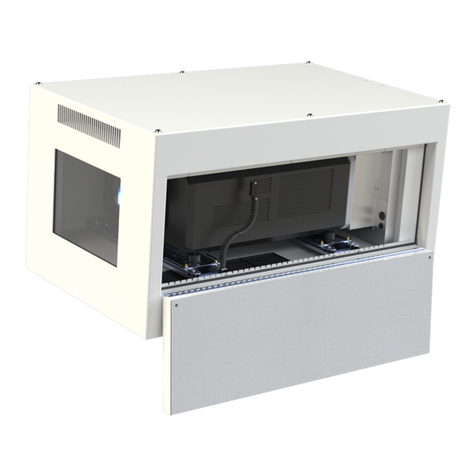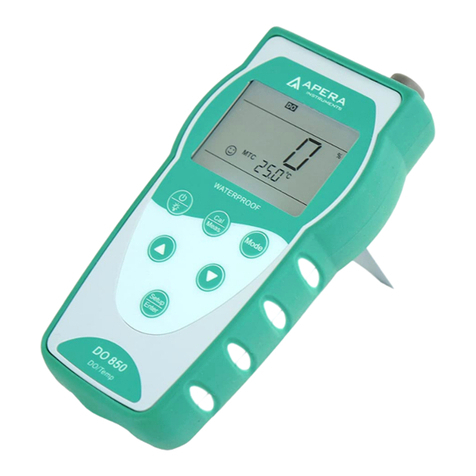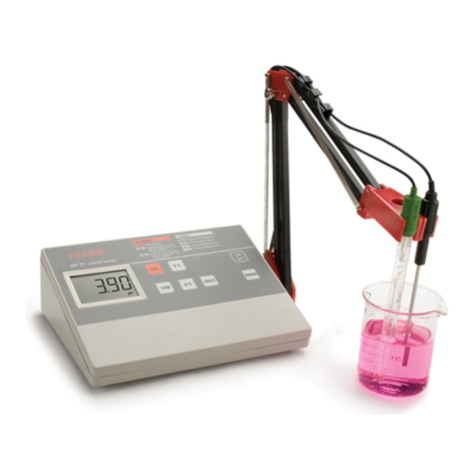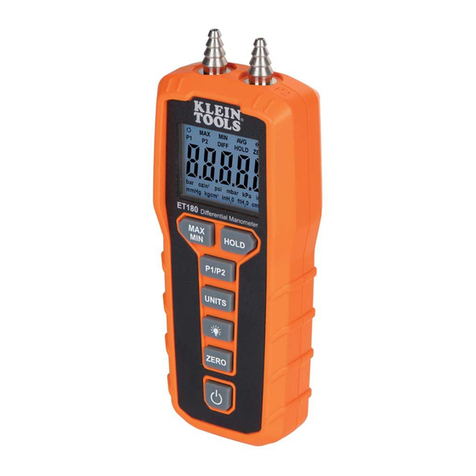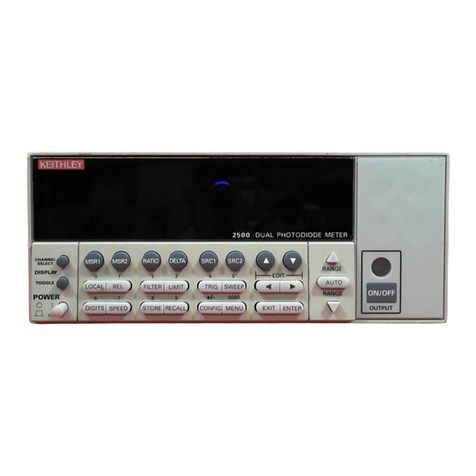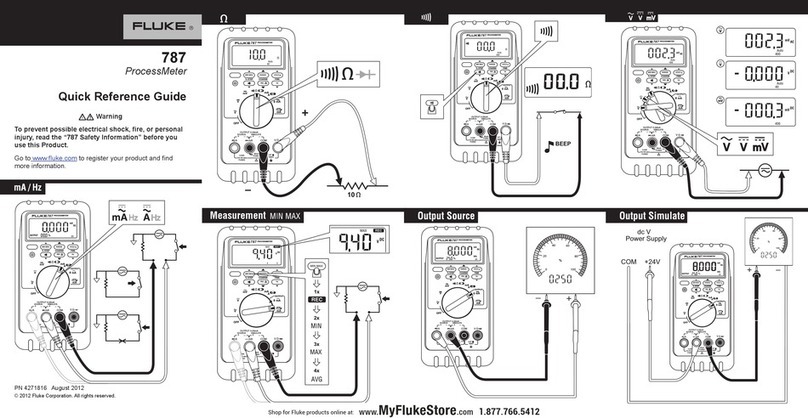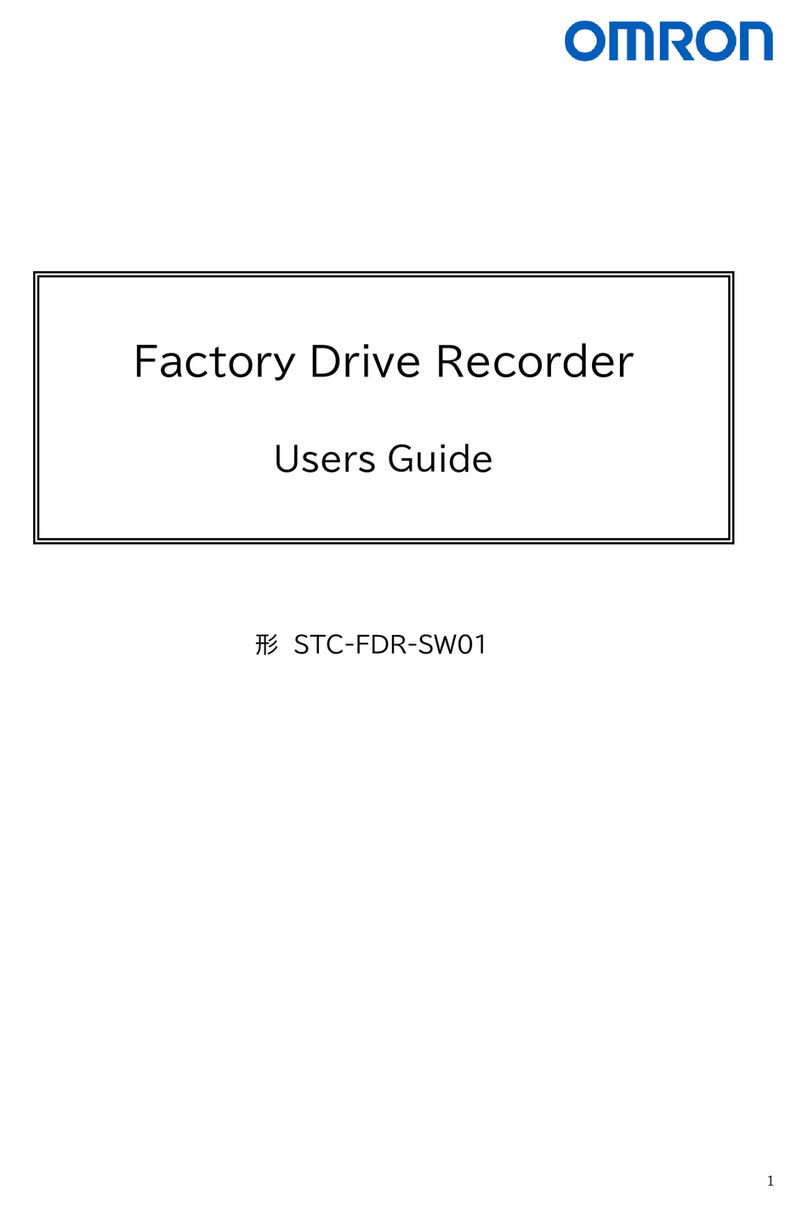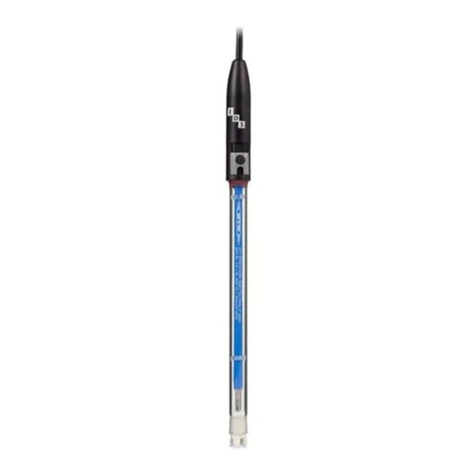Tempest Leader SENTRY LA1 User manual

1

2
This manual was designed so you can familiarise yourself with the use of your Leader SENTRY Wireless movement
monitor.
The instructions for use and safety guidelines must be followed in order to prevent any accident.
Any disassembly or repair must be performed by either LEADER or an approved dealer.
This manual presents the simplicity and ease of use of the device.
In order to improve this manual LEADER remains open to your suggestions. Do not hesitate to send them to us.
Reference
Product
D11.06.020
Leader SENTRY Wireless SINGLE (1 LASER)
D11.06.022
Leader SENTRY Wireless DOUBLE (2 LASERS)
D11.06.020F
Leader SENTRY Wireless SINGLE (1 LASER) with all accessories available (Complete
version)
D11.06.022F
Leader SENTRY Wireless DOUBLE (2 LASERS) with all accessories available
(Complete version)
OPTIONAL
D11.06.014
Suction cup mount with ball-joint mount
D11.06.023
External rechargeable battery
D11.06.025
External battery charger
D11.06.021
Wireless remote control
D11.06.026
Remote control pouch
D11.06.024
Case (only for 2 LASERS version)
Product references

3
1INTRODUCTION 4
2USAGE WARNINGS 5
3DESCRIPTION 6
3.1 Contents 6
3.2 Product description 6
3.3 Laser description 7
3.4 Tripod description 8
3.5 Ball-joint mount description 8
3.6 Description of available power supplies 8
3.7 Sentry SINGLE 1-laser transport case description 8
3.8 Sentry DOUBLE 2-laser transport backpack description 9
3.9 Optional case 9
3.10 Optional suction cup 9
3.11 Optional external rechargeable battery 9
3.12 Optional charger 9
3.13 Optional wireless remote control 9
3.14 Console description 10
3.15 DESCRIPTION OF THE SCREENS 10
3.15.1 Control screen 10
4INSTALLATION 12
4.1 Laser attachment to the Tripod 12
4.2 Connecting the power supply 12
4.3 Installing batteries 13
4.4 Filtering for unintentional passages 14
4.5 Adjustment and maintenance of the scope, laser pointer compared to the laser range finder 14
4.6 Device usage 16
4.6.1 VIEW ALL function 17
4.6.2 Operation of networked devices 18
5OPERATING PRINCIPLE 20
5.1 Choice of metric or imperial system 20
5.2 Alarm operating principle 21
5.2.1 Meaning of visual and audible alarms 22
5.3 In case of low batteries 23
5.4 Remote control (optional) 23
5.5 Pairing 25
5.6 Technical features 27
6WARNING 28
7TROUBLESHOOTING 28
WARRANTY 29
8ADJUSTMENT GAUGE 30

4
1INTRODUCTION
▪The Leader SENTRY Wireless movement monitor was designed to ensure the surveillance of unstable structures.
It provides additional security to teams involved in firefighting and emergency and rescue operations.
▪An eye-safe laser range finder is aimed at a potentially dangerous structure and continuously monitors the smallest
movements of it. The device can be used to monitor movements of any object or mass that may put people working
nearby in danger, such as unstable buildings, mudslides, avalanches, poorly balanced vehicles or any other similar
danger.
▪The laser range finder can be mounted on the supplied tripod or with the suction cup mount for attaching to a smooth
surface (vehicle body, window, etc.) and can detect movements up to a distance of 50 m depending on weather
conditions. A scope allows the user to aim the laser at the target structure. The distance between the range finder and the
target is indicated on the screen, as well as the movement measured in comparison to the selected detection threshold.
The device will trigger an alert when the selected threshold has been exceeded by 2 to 100 mm (0.007 to 0.33ft).
▪The laser range finder measures movements in the direction of the laser beam. The maximum accepted movement is
selected in increments. This allows the device to adapt to poor weather conditions or natural movements in the
structure. The variations are displayed on the screen until the threshold is reached. If the structure moves so as to
exceed the selected threshold, a powerful alarm (105 dB) is activated.
▪Two laser range finders can be used simultaneously, thereby allowing the user to monitor two different structures or
monitor the same structure from two axes of movement. The 2 lasers communicate via wireless connection.
The Leader SENTRY Wireless movement monitor is available in one or two-laser versions. An optional wireless
remote control is also available and can be connected to one or two lasers.
The Leader SENTRY Wireless movement monitor satisfies EC European recommendations:
Electromagnetic Fields, RoHS, WEEE.

5
2USAGE WARNINGS
Give each alarm the most attention possible.
Never assume that the reason for the alarm is accidental until that has been established definitively.
▪Ensure that the monitoring area is free of any unnecessary movements, (people, machines, etc.) in order to avoid false
movement detections.
▪In the case where it is no longer possible to measure the distance when a structure is under surveillance (in case of fog,
for example), the alarm will sound to alert the user.
▪The device is designed to filter out short-term obstructions to the laser beam (passing people, birds, etc.).
Longer lasting obstructions will trigger the alarm.
▪Fog, dust or intense light can influence the device's range. The user must take into account the environmental
conditions and adapt the distance so as to have accurate measurements.
▪When the temperature is very low (0°C (32°F) or lower), the batteries cannot be used. It is strongly recommended to
use an external power source.
▪Always make sure to use good-quality lithium, alkaline or rechargeable NiMH batteries.
Never use zinc batteries (zinc-carbon or zinc-chloride).
▪Do not use a mix of battery types.
▪When using the mains adapter outside, always protect it from rain and moisture.
▪Always test to see that the device is working correctly before any real use by verifying that the alarm works and the
flashes light up.
▪The scope is adjusted in a way to make the laser's red dot coincide with the cross-hair at 35 m (114.8ft).
Their alignment differs for distances shorter and longer than 35 m (114.8ft).
▪To avoid measurement errors, try as much as possible to position the laser beam perpendicular to the targeted surface.
Do not aim at dust-free glass, expanded polystyrene or surfaces that are similarly transparent.
▪When aiming at highly reflective surfaces, the laser beam can be diverted and measurement errors can occur.
▪The measurement time can increase when the surfaces are dark or non-reflective.
▪Wear a protective headset when approaching the laser after the alarm is triggered (105 dB).
▪Never look directly into the sun through the scope. That could cause eye injuries.

6
3DESCRIPTION
3.1 Contents
3.2 Product description
▪Leader SENTRY Wireless equipment:
DESCRIPTION
1 LASER (LA1)
Version
2 LASERS (LA1 and
LA2) Version
Class 2 laser range finder
1
2
Tripod
1
2
Ball-joint mount for tripod-range finder connection
1
2
Mains unit with 110/ 220V 50/60 Hz adapters
1
2
12V cable with car adapter
1
2
AAA Alkaline battery
12
24
Transport case
1
/
Backpack
/
1
User guide
1
1
Quick start manual
1
1
Suction cup ball-joint mount
Optional
Optional
External rechargeable battery
Optional
Optional
External battery charger
Optional
Optional
Remote control
Optional
Optional
Transport case
/
Optional
Laser range
finders
Tripods
Backpack
Accessories
Anti-shock case
(Optional)
2 LASERS
1 LASER
Transport case
Accessories
Laser range
finder
Tripod
User
guide

7
3.3 Laser description
➢The laser range finder is made up of:
▪A range finder used to measure the distance with great accuracy.
The laser range finder power output is less than 1mV. In case of laser exposure, the natural
reflex to blink and turn your head is enough to protect yourself from eye injuries.
▪A powerful alarm (105dB at 1m).
▪3 flashes for a visual alert.
Once the threshold has been selected, the devices are identified as
follows:
LASER 1 → 1 flash blinking every 5 sec.
LASER 2 → 2 successive flashes blinking every 5 sec.
▪A target scope with a red laser pointer to correctly adjust the
laser range finder beam on its target.
Device features:
▪1 protective lens and camera lens cap provided for storage
▪1 Mil-Dot cross-hair for better target accuracy.
▪5 light levels for the red/green cross-hair for night vision powered by 1 CR2032 battery (provided).
▪Equipped with a red laser pointer with 3 LR1130W batteries (provided). Autonomy 1h.
▪Equipped with a 2.5x/10x focus field of vision 8.9/32.5 at 100 m (328.1ft).
▪Equipped with a Ø40 mm (0.13ft) camera lens.
Black/Green/Red
cross-hairs
Laser
pointer
Adjustment (Lateral)
Factory adjusted
Adjustment (Vertical)
Factory adjusted
Ø40
camera
Lens and camera
lens protection
Focus 2.5x/10x
Target scope
Control
facade
Fastening
Point
Power or battery (optional) connector
(12-24V)
Red laser pointer
Laser range finder
Flashes
Battery compartments
LASER RADIATION / DO NOT STARE INTO BEAM / CLASS 2 LASER PRODUCT / IEC / EN60825-1:2014 /P<1mW; A=655mm (2.18ft)

8
3.4 Tripod description
▪The aluminium telescopic tripod linked to
a 3D ball-joint mount allowing the user to set up and adjust
the laser perfectly.
▪The maximum adjustment height of the tripod with
the laser is about 2 meters (6.56ft).
▪In case of wind or to stabilise the device, the tripod can be
weighted with a provided strap.
3.5 Ball-joint mount description
▪The 3D ball-joint mount functions as the interface between the
tripod and the laser. It includes the plate which is screwed under
the laser (to be tightened properly).
3.6 Description of available power supplies
▪1 external 12/24V 110/ 220V 50/60Hz compatible power
supply:
-Supplied with 1 car adapter power supply cable (3m (9.9ft)).
-Supplied with international adapters (UK, Europe, USA and
Australia). 1.2m (3.3ft) outlet cable.
-Power supply LED indicator.
-Short-circuit and surge protector.
▪Battery power supply:
-4 battery trays (3 x AAA batteries each - 12 batteries in total) for use in the
field without a mains supply.
-4 cases supplied to hold the battery trays in the dedicated compartments.
-12 x AAA alkaline batteries supplied. Lithium batteries or rechargeable
NiMH batteries can also be used. Choose good quality batteries.
Mains power supply remains as the
recommended power source.
3.7 Sentry SINGLE 1-laser transport case description
▪Transport case with high-density foam for quick storage in a vehicle boot.
The tripod can be fastened on top of the bag using a strap with Velcro.

9
3.8 Sentry DOUBLE 2-laser transport backpack description
▪A resistant and ergonomic backpack supplied to transport
2 lasers and all standard and optional accessories (External
batteries, tripods, ball-joints, remote control, user manual, etc.).
3.9 Optional case
▪Anti-shock transport case with IP67 seal certification for storing
and protection of the Sentry DOUBLE backpack. (2-laser version)
during transport and storage.
3.10 Optional suction cup
▪Offers optimum fastening. It can be attached to all smooth
surfaces such as glass or metal. It has a ball-joint mount.
3.11 Optional external rechargeable battery
▪NiMH 12Vdc/4.5 Ah battery.
-Charging time 5h30 between 0 ° and 40 ° (32°F and 104°F).
-IP55.
-Allows the laser to be used for 45 hours.
Recharge the battery every 6 weeks to ensure full
operating capacity.
3.12 Optional charger
▪Charger for the external NiMH rechargeable battery (see above):
110/240Vac/12Vdc/0.35A max.
3.13 Optional wireless remote control
▪It displays laser data and allows functionalities to be controlled remotely.
It has a speaker to relay the alert if the threshold is exceeded (80 dB).
-Anti-shock ABS box.
-IP 67 seal.
-LR06 AA 6-battery power supply.
-A carry pouch (optional) is also available.

10
3.14 Console description
NB: You only need to press any of the buttons on the keyboard to stop (and therefore deactivate) the alarm.
3.15 DESCRIPTION OF THE SCREENS
Home screen:
▪Start screen displayed when turned on for 2 seconds.
3.15.1 Control screen
Laser name: Upper and lowercase letters are used to distinguish the device being used:
NB: - The optional remote control displays the lasers only in uppercase letters.
- In order to conserve battery power, the laser range finder turns off after 5 minutes if no threshold is selected.
Signal connection level based on 4 levels. This icon is displayed only if the laser range finder
is connected with a 2nd laser range finder or the optional remote control. It is possible to disconnect a laser
from the network (see § 4.6.2).
Laser range finder number being used; here “LA1’’ stands for LASER 1.
LASER 1
Laser used
laser 2
2nd remote laser (shown on the LASER 1
screen during use.
The left-side figures of the battery image indicate
that the device is being used
Screen & NON-engaged alarm
ON/OFF button
VIEW ALL button
- Used to view all lasers
Threshold selection
- Used to activate or
deactivate monitoring
within the limit of the
chosen threshold
OLED display
SELECT button
- Mainly used to change from one
laser to another
- Used to deactivate the audio alarm
in VIEW ALL

11
Battery level indicator for the laser range finder in question; here ’’LA1’’.
4-level indication: (100%), (70%), (30%) and for low battery (5%). The laser
battery life is around 8 hours during normal operation (threshold met - no alarm) with good-quality alkaline
batteries.
In addition, the “low battery” alarm (see § 5.3) is automatically triggered 5 minutes prior to the device switching
off for 5 sec.
When the laser is connected to 12-24V or the 100-240V mains power, the battery symbol replaces the
battery symbol.
Indicates the distance between the laser range finder and the target.
Measurement quality of the laser range finder based on 5 levels. In some cases (weather, light, target surface,
etc.), the measurement cannot be taken: An error code Exxx is displayed (see §7).
If a threshold is met and the measurement suddenly can no longer be taken, an alarm is triggered.
Display of selected threshold with the movement of a cursor representing the movement of the target.
➢Example: Visualisation of LASER 1 screen
➢Example: Visualization of the laser 2
screen and selection of a threshold from
LASER 1.
NB: Remote laser range finder identification once the threshold has been selected:
▪Laser 1 → 1 flash blinking every 5 sec.
▪Laser 2 → 2 successive flashes blinking every 5 sec.
➢Example: Visualisation of the cursor representing target movement.
Bell indicating that the alarm is ready to operate if the selected threshold is exceeded.
LASER 1 screen without threshold
LASER 1 screen with 100 mm (0.33ft)
threshold
LASER 1
laser 2 screen without threshold
laser 2 screen with 100 mm (0.33ft)
threshold
LASER 1
LASER 1 screen with 100 mm (0.33ft)
threshold 0 mm (0ft) cursor
LASER 1
LASER 1 screen with 100 mm (0.33ft)
threshold 40 mm (0.13ft) cursor
15.368m

12
4INSTALLATION
4.1 Laser attachment to the Tripod
4.2 Connecting the power supply
Mains power supply remains as the recommended power source. In case no external
power supply is available, use batteries or the external rechargeable battery (optional).
▪The Leader SENTRY Wireless comes with its power supply (see §3.6).
Screw the ball-joint mount onto
the central axis of the tripod
Set up the
tripod
Place the laser on the ball-joint
mount
Central
ball-joint
mount
Tripod
Laser range
finder
Ballast if needed using
the supplied strap
Remove the protective plug under
the laser range finder
Plug the power cable connector into
the laser range finder's plug.
Plug the laser range finder power cable
into an external power source.
Mains
110/220V
12V
12V
Battery
12V

13
4.3 Installing batteries
Note: It is recommended that you use LR03 AAA Alkaline batteries. The device can work independently with
LR03 AAA Alkaline batteries (see §5.6), but they should be used more as a back-up power supply in case no
external power source is available. Lithium batteries can also be used. The battery life can be extended (see §5.6).
The battery life varies according to the battery brand and quality.
▪The device has 4 trays that each require x3 LR03 AAA batteries, for a total of 12 batteries.
Transparent case
Respect the +/-polarity
Do not force - Respect the fitting orientation
Respect the +/-polarity
Insert 3 LR03 AAA batteries in each battery tray.
Slide the full battery trays into the transparent case.
Put 4 battery trays in the laser range finder's compartments
+
+
-
-
Battery tray
Battery tray
+
3 LR03
LR03 AAA batteries
Transparent case
+
Battery tray
+
3 LR03 AAA
Battery tray
+
3 LR03
batteries
Laser range
finder
Battery
Packs
Battery compartments
Battery compartments

14
L :6m / 19.7ft
L :35m / 114,8ft
L :50m / 164ft
Reference target
4.4 Filtering for unintentional passages
▪The device is designed to filter out short-term obstructions to the laser beam (passing people, birds, etc.).
Longer lasting obstructions will trigger the alarm. This function is only operational if a threshold has been selected.
The filtering zone is located between the laser and the target at two times less (-2 x) than the selected threshold.
Example with a 100 mm (0.33ft) threshold:
▪A movement in the filtered zone, such as a knock against the tripod, will trigger the alarm with a longer response time
from 1 to 2 sec., due to the filter. Conversely, a movement in the threshold zone will trigger the alarm immediately.
4.5 Adjustment and maintenance of the scope, laser pointer compared to the laser range
finder
The scope is used to view the target at a distance. From a certain distance and depending on the light
levels at the time, the red dots of the laser range finder and the laser pointer are no longer seen on
the target. The target cross-hair (cross) is then the only means for targeting.
▪Please note that the scope is adjusted in a way to make the laser range finder's red dot which appears on the target
coincide with the cross-hair at 35 m (114.8ft). Their alignment differs for distances above and below 35 m (114.8ft).
This is due to the distance between the laser and the scope mounted a few centimetres above the box.
-Filtered zone: between the laser
and (target distance - 2x
threshold) -Exceeded threshold →
alarm ON if laser beam is
interrupted more than 1 second
and if two laser acquisitions are
complete.
(2 sec. max. depending on target
and distance)
100 mm
threshold
zone
Exceeded
threshold →
alarm On
Exceeded
threshold →
alarm On
0m
1000mm
800mm
900mm
1100mm
1200mm
100 mm
threshold
zone
Scope pointer
Range finder pointer
Target

15
Adjustment (Vertical)
Factory adjusted
Adjustment (Lateral)
Factory adjusted
▪The target scope is pre-adjusted in the factory to ensure the target cross-hair (cross) corresponds with the laser pointer
red dot fixed on it. In the event of improper adjustment or low batteries for the laser pointer and the cross-hair, follow
the following procedure:
➢Scope adjustment.
Remove the covers of the Vertical and Lateral adjustment buttons.
Adjust the laser to bring the dot back towards the centre. Adjust the Vertical and Lateral adjustment.
Laser pointer adjustment to bring the dot back towards the centre. Adjust the two Allen screws with the 6-sided
wrench provided for this purpose, follow the following procedure:
NB: Calibration to be completed at the end of each operation,
adjustment gauge should be used (see §8).
Adjustment (Lateral)
Factory adjusted
Adjustment (Vertical)
Factory adjusted

16
1 CR2032 battery
(provided)
3 LR1130W batteries
(provided)
+
+
➢Changing the laser pointer and cross-hair batteries.
Remove the covers of the battery compartments.
Replace the used batteries with new batteries.
4.6 Device usage
▪Identify the target to be monitored.
▪Ensure that the tripod is properly balanced and set up on solid ground. A ballast can be suspended from the tripod
to stabilise it. Adjust the height of the tripod if needed.
▪Aim the laser beam on the selected surface by using the scope.
The laser only functions on a non-transparent surface.
It's best to select a flat surface with a light grey colour.
▪Check the distance indicated on the display. To obtain the best performance, it is recommended to place the
laser less than 50 m (164ft) away from the structure. Try as much as possible to position the laser beam
perpendicular to the targeted surface.
▪When selecting the unit of measurement, it is possible to change from the metric to imperial system and vice
versa (see §5.1).
▪Select the detection threshold using the buttons ranging from 2 to 100 mm (0.1” to 4”).
▪Using the selected threshold, monitoring is activated after 2 seconds to avoid button pressing causing a
movement detected by the laser range finder. Check that the flashes are blinking:
Range finder
Use of a Sentry SINGLE
Use of a Sentry DOUBLE
Laser 1
1 flash every 5 sec.
1 flash every 5 sec.
Laser 2
/
2 successive flashes every 5 sec.

17
▪It is recommended to test that the device works correctly before any real use. To test this, you only need to place
your hand in front of the laser beam to trigger the alarm. You only need to press any of the buttons on the
keyboard to stop the alarm.
Once the alarm has been stopped, monitoring must be restarted by selecting a threshold again.
The Leader SENTRY Wireless has 3 alarm rates:
1 to identify when a threshold has been exceeded.
1 to identify an error message Exxx (see § 7).
1 to signal low battery level.
NB: See Meaning of Visual & Audible Alarms (see § 5.2.1).
▪The Leader SENTRY Wireless is designed to detect movement in the axis of the laser range finder beam. To monitor
the two axes simultaneously, two devices can be used together and operated from the same control screen.
4.6.1 VIEW ALL function
Function accessible by pressing the button.
▪The VIEW ALL screen is only available if at least two devices are all connected.
LASER 1 name (Capital letters) ’’LA1’’.
LASER 2 name (Lower case letters) ’’la2’’.
Selected threshold value.
Battery indicator for LASER 1.
Icon which indicates that the sound alarm is deactivated (here for LASER 1).
Icon that indicates that the sound alarm has been activated (by default when the laser range finder is turned on).
E.g. LASER 1 and laser 2 connected.
If LASER 1 detects a movement exceeding the
threshold, it triggers the visual alarm (flashes) - silent
mode.
If laser 2 detects a movement exceeding the threshold,
it triggers the sound alarm (siren) and visual alarm
(flashes).
LASER 1 screen with 100 mm (0.33ft) threshold
and laser 2 with 5 mm (0.02ft) threshold
LASER 1
Structure
Lasers

18
4.6.2 Operation of networked devices
If acquiring a Sentry DOUBLE (2 lasers) or a SENTRY SINGLE (1 laser) with optional remote control, the laser
range finders and the remote control are paired together in the factory.
▪The laser range finder numbers (LA1 and LA2) are factory assigned and do not change.
▪In the event of separate acquisition, they can be paired or unpaired if needed based on the procedure (see § 5.5).
The lasers must be switched on one after the other so wireless connection takes place correctly.
NB: For a successful process, wait for the control screen to switch on the 2nd laser or remote control.
▪Once they are turned on, the devices indicate the wireless connection level.
If the wireless connection level does not appear, turn off the devices and restart.
▪Pressing for 5 seconds on deactivates the laser's radio communication so it exits the network and
makes it independent. The other devices no longer "see" it. Pressing on for 5 seconds resets the communication.
From any device connected to the network making the symbol appear it is possible to:
▪View a summary of all the connected devices (access to the "VIEW ALL" screen) by pressing on the button.
AND
LASER 1
LASER 2
LASER 2
LASER 1
Remote control
OR
OR

19
▪Select a threshold by pressing on one of the buttons.
▪View the detailed control screen for laser 2 on the screen of laser 1 and vice-versa by pressing on the button.
oView the screen of laser 2 on the LASER 1 screen
oView the screen of laser 1 on the LASER 2 screen
oView the LASER 1 and LASER 2 screens on the remote control screen
Note that LASER 1 and LASER 2 are in capital letters. From the remote control it is not necessary to distinguish
between them. Physical remote identification takes place via flash blinking. Once the threshold is reached, laser 1
flashes once/5 sec. and laser 2 flashes twice/5 sec.
Remote control
Remote control
LASER 2 screen without threshold
LASER 1 screen without threshold
LASER 1
laser 2 screen without threshold
LASER 1
LASER 1 screen without threshold
LASER 2 screen without threshold
LASER 2
LASER 2
laser 1 screen without threshold
LASER 1
LASER 2
Remote control
OR
OR

20
▪Stop an alarm by pressing on any button on the keyboard.
5OPERATING PRINCIPLE
5.1 Choice of metric or imperial system
▪To change the display from millimetres to inches and vice-versa, you must push and hold the button.
and the button simultaneously for at least 5 seconds when turned on.
▪In the event where several devices are connected to the network, the selected unit of measurement is the one
programmed on the 1st device that has been turned on.
▪The unit of measurement is saved for each restart until it is changed by the user.
oMetric → Imperial
oImperial → Metric
LASER 1 screen without
Imperial threshold
LASER 1
LASER 1
LASER 1 screen without
Metric threshold
LASER 1 screen with Metric
threshold
+
5s
LASER 1 screen without
Metric threshold
LASER 1
LASER 1
LASER 1 screen without
Imperial threshold
LASER 1 screen with
Imperial threshold
+
5s
Remote control
LASER 1
LASER 2
OR
OR
This manual suits for next models
1
Table of contents
Other Tempest Measuring Instrument manuals
Popular Measuring Instrument manuals by other brands

Extech Instruments
Extech Instruments 461920 user manual

TR-Electronic
TR-Electronic LLB65-00600 user manual
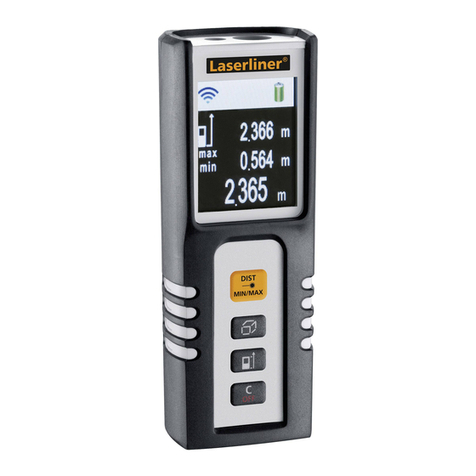
LaserLiner
LaserLiner DistanceMaster Compact operating instructions
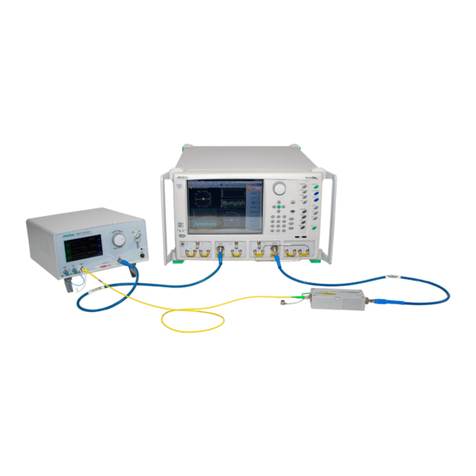
Anritsu Company
Anritsu Company VectorStar ME7848A-0240 quick start guide
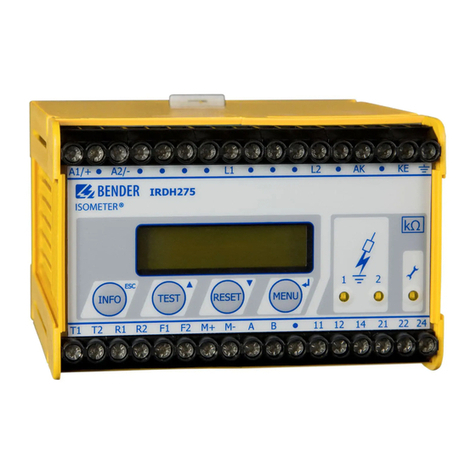
Bender
Bender ISOMETER IRDH275 manual
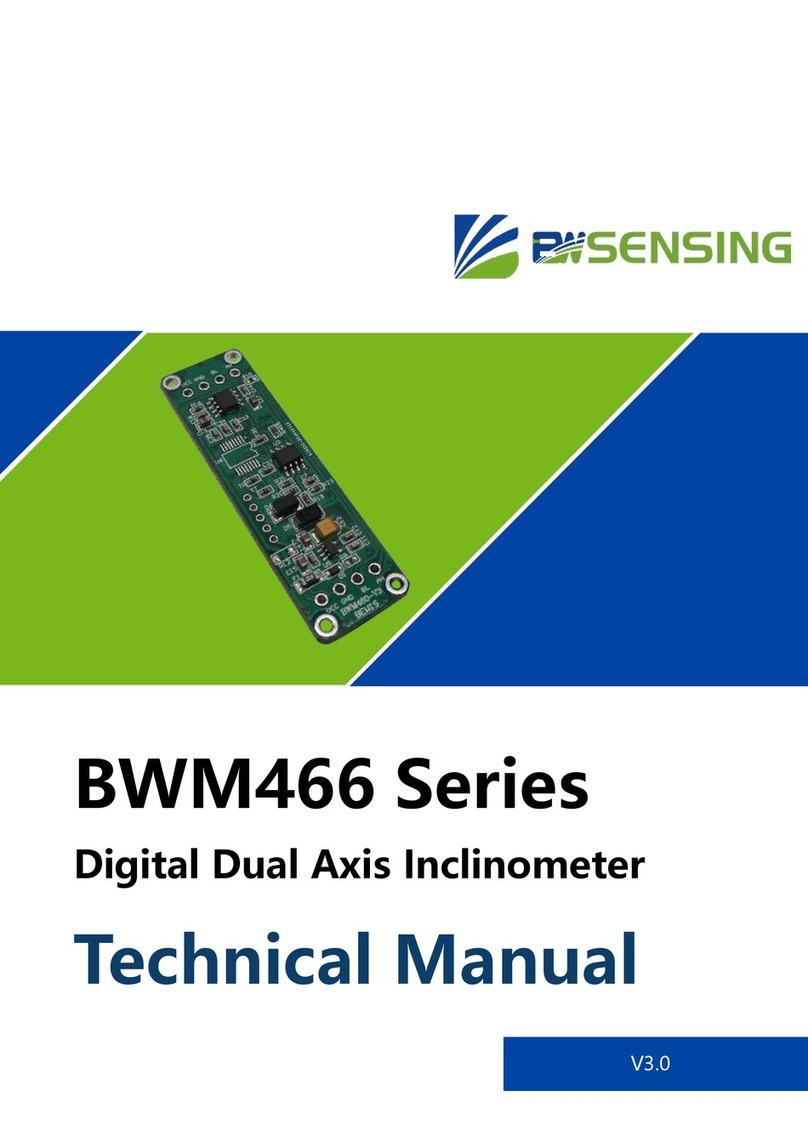
BW SENSING
BW SENSING BWM466 Series Technical manual
